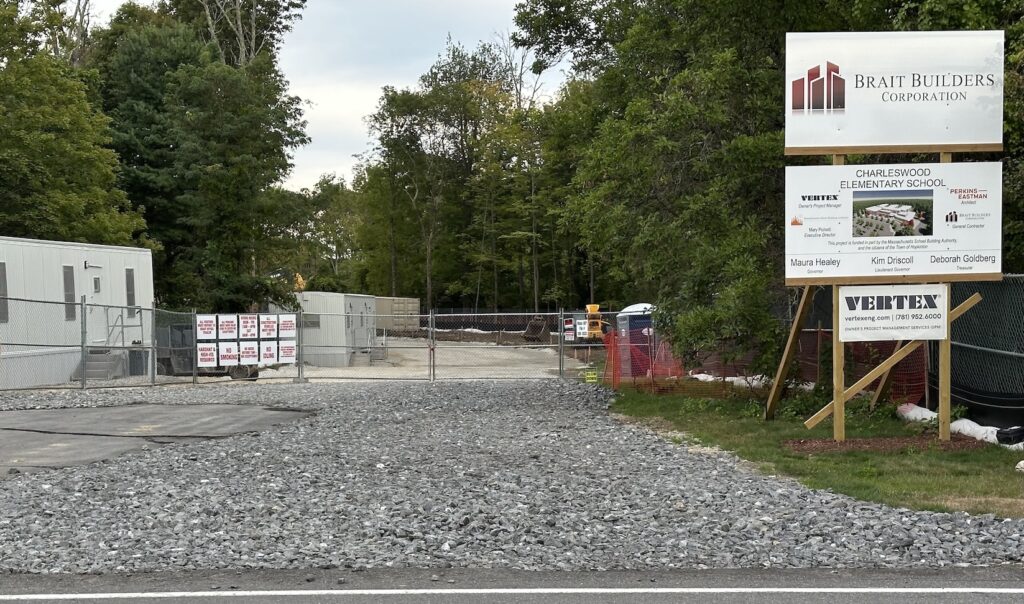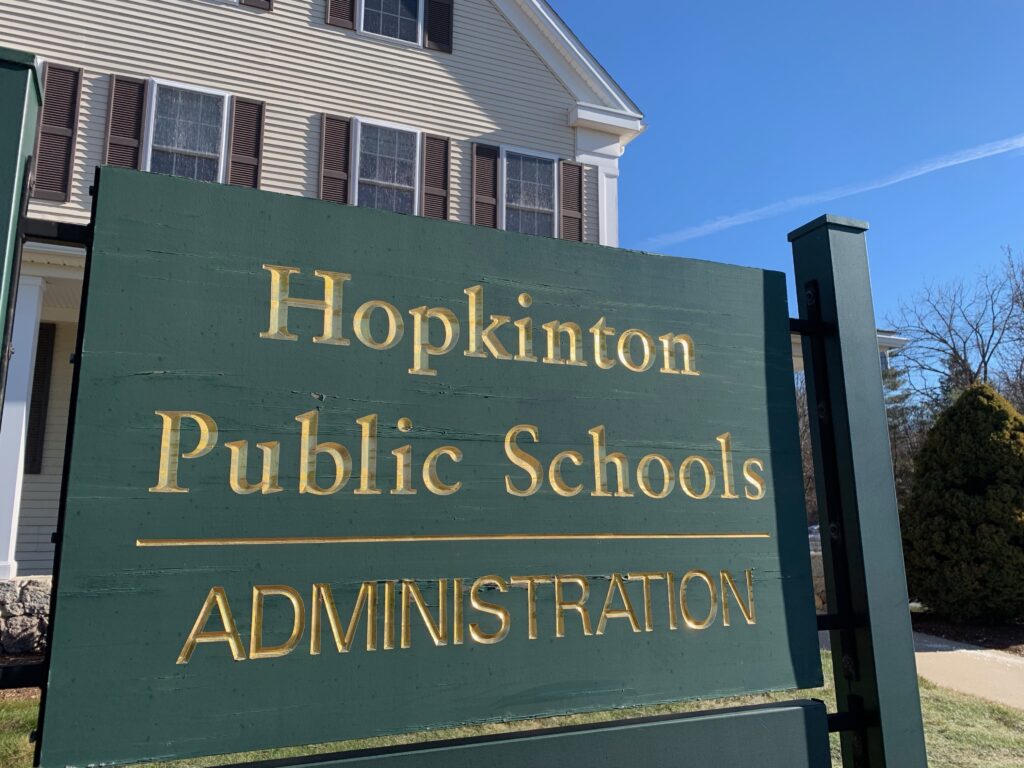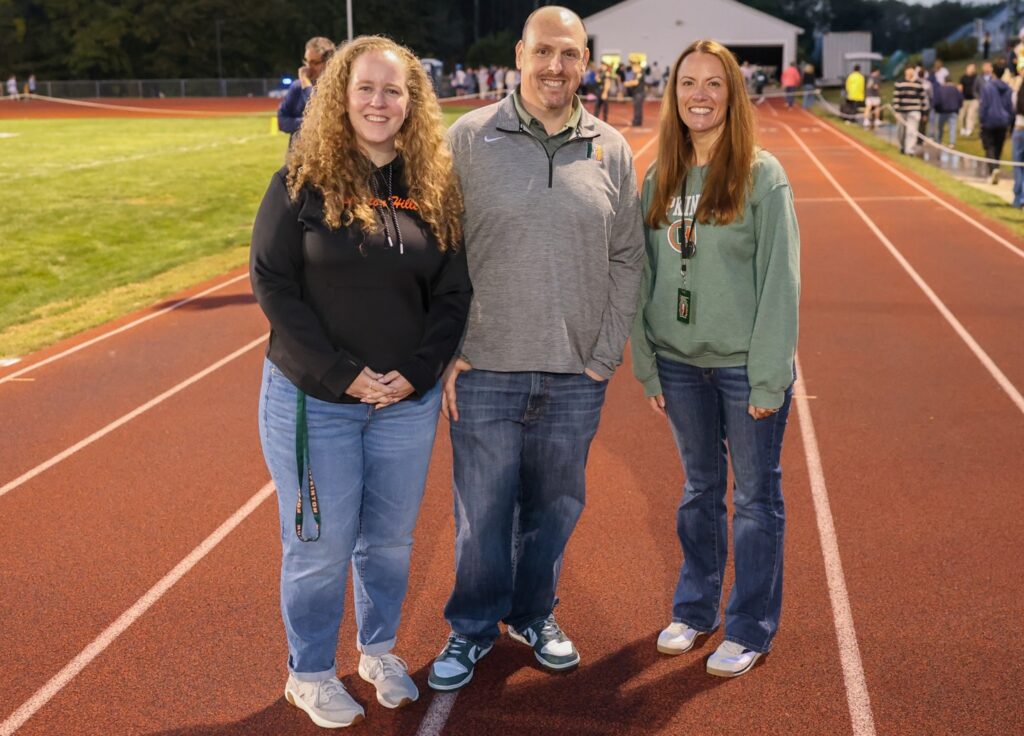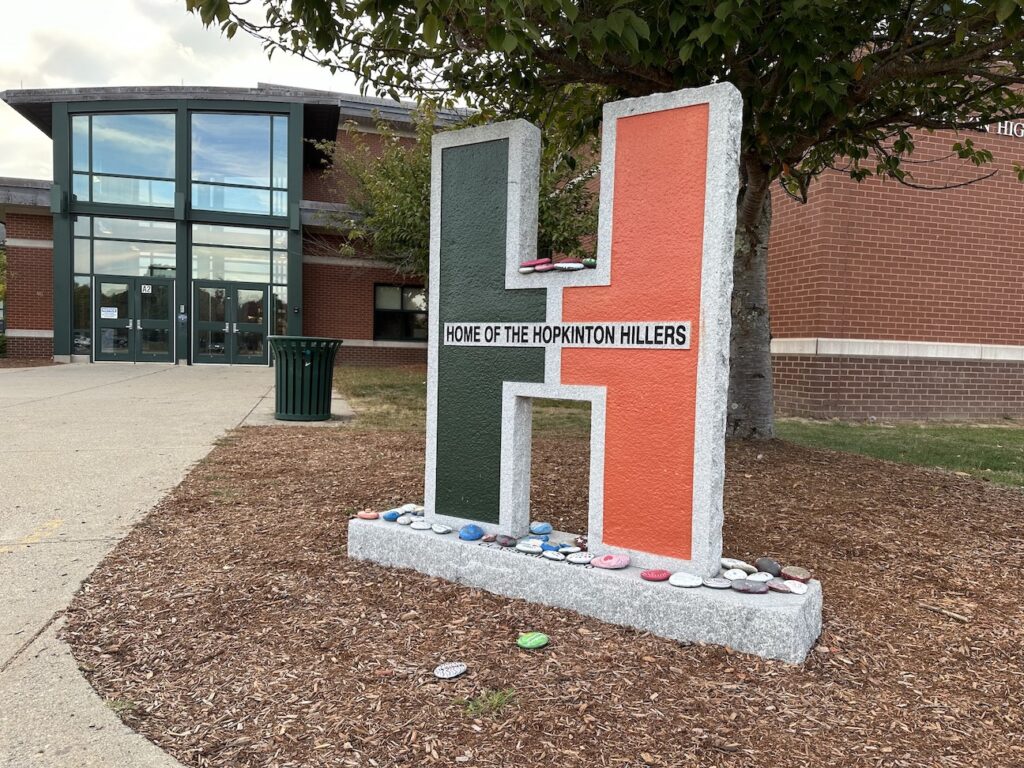Modifications to the parking lot plans for the Charleswood School were among the topics of discussion at Tuesday’s Elementary School Building Committee meeting.
To address concerns raised by the Planning Board and Conservation Commission during the permitting process so far, the Perkins Eastman design team is altering its plans for paved and overflow parking lots.
Dan Colli, Perkins Eastman project manager, said architects are shifting an athletic field to the west and splitting the original overflow parking area into two parts. One side will remain on the west, and part of the lot will be relocated to the east and paved.
He said the designs are “a work in progress,” but he expects there ultimately will be 230-240 paved parking lot spaces and 30-40 in the overflow lot.
Colli noted the Conservation Commission had concerns that the entry road would be encroaching on the buffer zone for wetlands. The committee suggested a shift of about 10 feet, which he found reasonable. The change provides the benefit of extra parking, he said, adding about 15 spaces.
Vertex Project Manager Chris Eberly said it is in the project’s best interest and “advantageous” to not go through a zoning special permit process for parking. Instead, Eberly said, he reached out to the building inspector to draw parallels between this project and the Hopkins School addition.
The Dover Amendment previously was used to allow the new school to have three stories, for example.
Here, the amendment, which exempts schools from certain zoning restrictions, granted waivers of requirements for parking counts, buffers from property lines, and frontage because the project is contiguous with Marathon School, he said.
Not requiring a landscaped island in the parking lot also makes it easier to plow, Eberly said.
Eberly said the reason for the unpaved lot was to limit the impervious area. He said the plans had to be “revisited” to avoid growing it by more than 10% to avoid triggering a change notification order (process) from the Massachusetts Environmental Protection Act (MEPA) office.
Colli added that it is more expensive to have a paved lot connected to the drainage system.
“It’s a small impact for a pretty big gain,” Colli said.
Eberly said moving the buffer zone preserves the potential for a future (walking) connection with development coming in to the north, which Eberly said is not part of this project.
Updated drawings will be released next month, and Eberly said, “If we need to discuss the scope of some of these modifications to bring them in line with budget expectations, we’d have that discussion at that time.”
He said the cost for parking/paving could be absorbed in the budget. He noted that at the last budget cycle, the construction budget was running $1.5 million under estimates. Responding to a question about using contingency funds, Eberly said contingency usage versus scope cuts would be decided on by the ESBC.
He said things are in a “reasonable place” when it comes to the $123 million construction budget.
Passive House funding outlined
The ESBC also talked about $87,890 being used for a technical support specialist to ensure requirements are met for a Passive House certification. A total of $16,500 will be allocated for air quality tests that MEPA requested as part of a single Environmental Impact Report (EIR).
ESBC chair Jon Graziano emphasized this money was within the existing budget. Eberly said $300,000 was put aside under “other project costs” and would be the source.
Eberly outlined Passive House energy code for the benefit of new School Committee voting member Chris Masters and alternate Kyla McSweeney.
He said it is like the Leadership in Energy and Environmental Design (LEED) program and has a goal of a “carbon free, highly efficient building.”
Getting Passive House certification is a “straightforward method to achieve energy code compliance,” Eberly said.
It results in a 3% addition to the Massachusetts School Building Authority (MSBA) formula for reimbursement, he explained. Another 1% can be achieved through LEED, thereby changing Hopkinton’s reimbursement rate from 44% to 48%, or about $62 million.
The Vertex representative said they are waiting for comments from the local permitting boards prior to appearing before them again in the upcoming two weeks.




















0 Comments